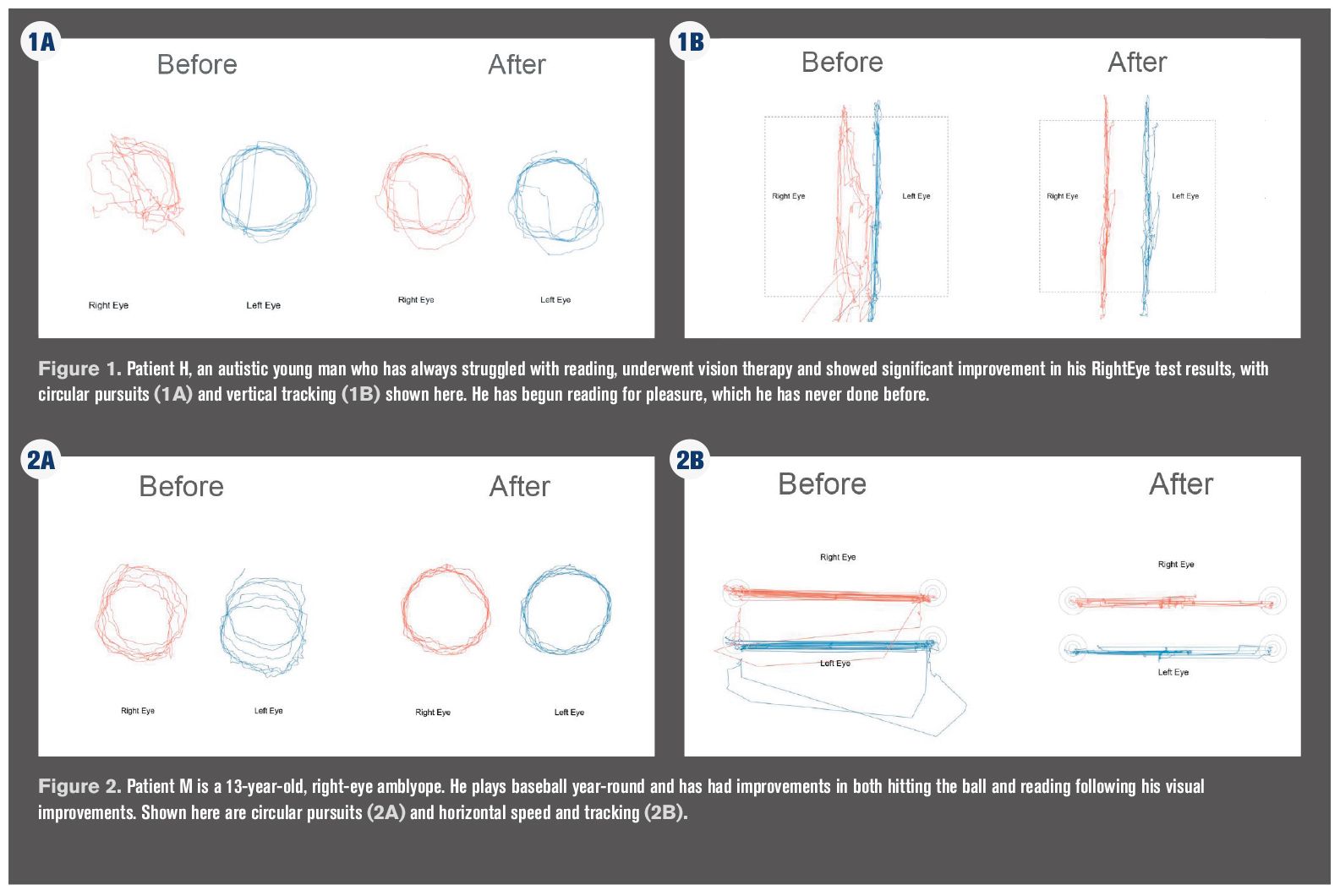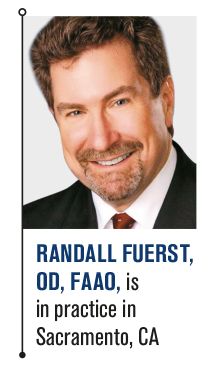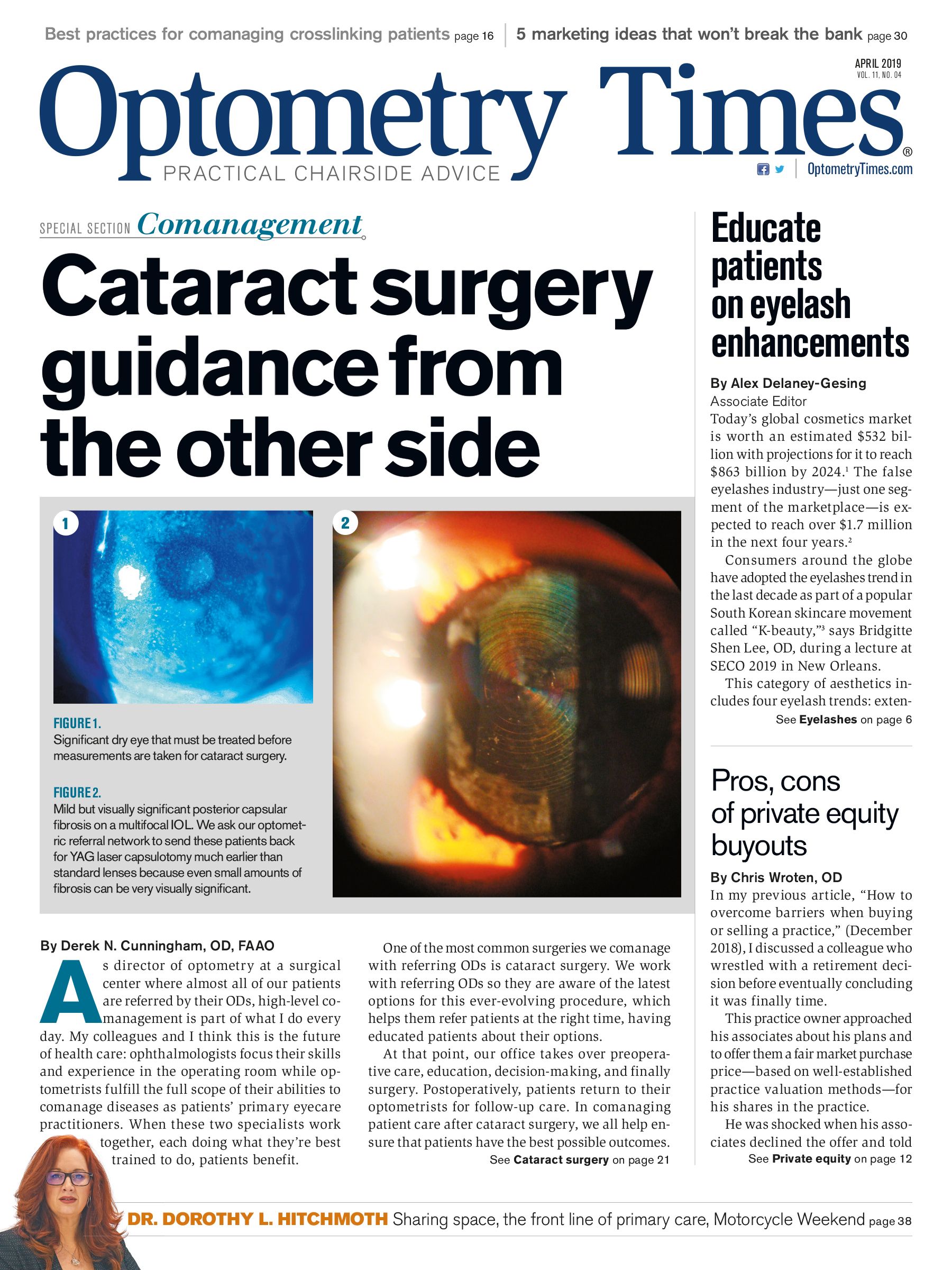4 ways to use eye tracking in your practice


I am part of a large, full-scope optometry group practice with access to a wide range of diagnostic and treatment technologies. Eye tracking is a technology that our practice has been exploring recently-and I believe it has great potential to help patients and practices of all sizes.
We initially added eye tracking as a way to quantify the impact of vision therapy, which has been offered in our practice since the late 1960s. However, after seeing many other applications beyond vision therapy, we are now offering eye tracking as part of specialized exams for reading evaluations, sports vision, and concussion care (generally on referral) and as an add-on to regular eye exams, based on patient complaints or interests.
I am considering whether to integrate eye tracking even more broadly into my vision exams for all patients.
Related: Vision therapy: A top 10 must-have list
Increasingly, it makes sense for ODs to go beyond visual acuity to assess functional vision more comprehensively. That would include not just how well the eyes focus (acuity) but binocular vision, whether the two eyes work together adequately, and how well the brain processes visual inputs.
Our practice uses the eye tracking system from RightEye. It is a portable system that tracks eye movements and correlates them to functional vision concerns, and it provides a wide range of applications.
Although all optometrists are taught to evaluate pursuits, saccades, and convergence, our normal methods of doing this are somewhat rudimentary, time consuming, and subjective. We have found that the RightEye system gives us the ability for the first time to test these functions in a quick, comprehensive, and objective way. It includes the RightEye EyeQ tests, reports, and training tools. The reports from each specific test (reading, sports vision, functional vision, and brain health) have been key for our practice because they make it very easy to demonstrate areas for improvement to patients, parents, and other professionals.
Kids and reading
Our most common utilization of eye tracking is in evaluating reading and vision-related learning difficulties in children.
With the Reading EyeQ test, we are able to record eye movements as a child reads an age-appropriate passage of text. This is extremely helpful in showing parents that even though their child has 20/20 vision, there may still be functional vision problems. The child may not be processing visual information efficiently and productively.
Related: Why you should offer children's eyewear
For example, he may comprehend the passage reasonably well, but he may correctly track only six of the 10 lines of text. Even a lay person can easily see from the report that the eyes are darting all over the place, taxing accuracy and taking substantially longer to read.
Or, we may see how the two eyes start to diverge as the child scans a paragraph. The evaluation helps us determine where the problem is and identify a path forward to improve reading efficiency.
Sports vision
In a sports vision evaluation, we use eye tracking to test aspects of an athlete’s visual function relevant to sports performance, such as dynamic visual focus, eye movement speed, reaction times, visual concentration, and peripheral awareness. The Sports Vision EyeQ test compares their performance to others and identifies strengths and weaknesses that can be incorporated into a training program.
Recently, there has been a proliferation of new technologies for sports vision practices.Two that we have incorporated are Dynavision D2 (Axtion Fitness Tech) for testing and training athletes on reaction time, visual awareness, and hand-eye coordination; and the Vivid Vision virtual reality system. These are complementary to eye tracking, which will continue to be the centerpiece of our sports vision evaluation.
Related: 8 tips to add sports and performance vision to your practice
Concussions and brain health
The opportunity to look at brain health in patients who have had concussions is exciting because ODs can make such a difference in patients’ recovery process. Concussion and other traumatic brain injuries commonly have associated visual and vestibular symptoms. There are now at least three systems that have been cleared by the U.S. Food & Drug Administration (FDA) for use in evaluating eye tracking and that have applications in concussion care, including RightEye, EyeBox (Oculogica), and Eye-Sync (SyncThink).
Visual symptoms post-concussion may be ignored by other healthcare professionals, but eye tracking can clearly illuminate the deficits. I recently saw a patient who had been hit in the right eye with a snowball. We could see a clear difference between the right and left eyes on her eye tracking exam.
I am also beginning to use the RightEye Brain Health EyeQ testing to help me counsel elderly patients and their families on driving fitness. As seniors age, determining when they should stop driving is difficult, especially if ODs try to make a determination based on visual acuity alone.
Related: How vision can help diagnose concussions
With objective eye-tracking data, I can take into account other aspects of visual function that contribute to the ability to drive safely, such as peripheral awareness and reaction time. I recently tested an 83-year-old gentleman whose brain health assessment score was 27. Given that the functional range is 60+, I was confident in recommending he stop driving.
I strongly believe that in many cases, tests of visual function such as eye tracking and visual-evoked potential are more effective ways to assess brain health than magnetic resonance imaging (MRI). Relative to expensive imaging procedures like MRI, these are cost-effective tests that can be administered efficiently without going to a hospital, and they provide ODs with effective data to understand how brain processing may be altered.
Vision training and therapy
We also offer patients the opportunity to click on a link in their eye tracking report to EyeQ Trainer exercises. Although our practice offers vision therapy, these self-directed training exercises have proven to be an excellent first step.
For busy patients with mild deficits due to a concussion, for example, the linked training program may be all they need. For others, it can be a precursor to more comprehensive vision therapy or a quick way to measure the progress of vision therapy.
For providers who don’t offer vision therapy, linked training tools that work on functional vision skills lower the barrier to entry and make it easier for patients to do something, even if it isn’t a full course of vision therapy.
Related: Vision therapy: 10 more tools for your practice
Elevating optometry
I see optometry filling a void and participating in evaluating the visual system and its role in brain health. With new tools like objective, database-ranked eye tracking, optometrists can truly be part of the team, along with sports vision physicians, neurologists, physical therapists, and others who treat patients with traumatic brain injury.
I suspect that integration of eye tracking will be similar to that of retinal imaging, which began as a novelty device in one office in our practice and is now offered to every patient because of the compelling information it provides and its ease of use and appeal to patients.
Prescribing glasses and contact lenses will remain at the core of optometric practice. However, the ability to utilize technology to evaluate functional vision in a more holistic way presents tremendous opportunities for elevating our profession to provide care that goes well beyond vision correction.
Read more technology articles here
About the author
Randall Fuerst, OD, FAAO, is in practice in Sacramento, CA.
Dr. Fuerst is a partner at EYEcenter Optometric, with 5 locations in and around Sacramento, CA. He does not have a financial relationship with the company mentioned.
rfuerst@gmail.com

Newsletter
Want more insights like this? Subscribe to Optometry Times and get clinical pearls and practice tips delivered straight to your inbox.